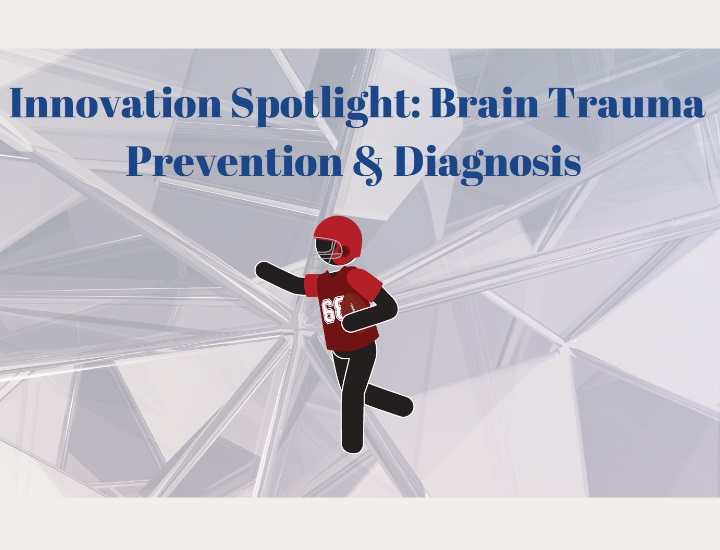The Problem
Alone in a pick-up truck parked in an abandoned lot, a flash of light is seen, the zap of a stun gun is heard, and a body falls unconscious. Superglue holding his rotting teeth within his skull and using a stun gun to sleep, what sounds fictional is all too real for the retired hall of fame, 4x super bowl champion, Mike Webster.
Plagued by dementia, depression, and destitution, “Iron Mike” Webster’s deteriorated mental capacity is commonplace for retired NFL players. He was diagnosed with Chronic Traumatic Encephalopathy* (CTE) after repeated blows to the head; a phenomenon that has recently captured the sporting industry’s attention.
The true severity of this issue was realized during 2013 when a settlement was reached between the NFL and thousands of former NFL players as plaintiffs. Resulting in a compensation of $765 million, the well documented court trial shed light on the negatives of the overwhelming catastrophe that society had misconstrued to be a safe pastime.
Target market; Is it warranted?
With concussions traditionally diagnosed by the infamous quote “how many fingers am I holding up?” as well as checking the victim’s head for bumps, the necessity for innovation within the field of concussion detection is clear. While the target market for this innovation is all contact sports; with more than 96% of deceased NFL players testing positive for CTE, and 79% of football players from any level testing positive, the need for an early detection device is warranted in football alone.
Creating the “Head Health Challenges”, the NFL has promised $60 million over 4 years to their three-stage collaboration among General Electric and Under Armour to develop technology to improve brain protection. Winning the opportunity to partake in the NFL’s Head Health initiative are the United States Army, the University of Washington, and Viconic Sporting.
The United States Army
Creating a material within their research laboratory, the US Army has fashioned an attachment to offset the sudden acceleration of a helmet during a collision. Connecting from the lower bars of the user’s football helmet to their chest, the attachment utilizes the innovative material’s ability to allow voluntary movement but minimize head “snap backs” that are traditionally associated with concussions.
The University of Washington
Partnering with VICIS, the University of Washington has developed a helmet dubbed as the Zero1. Exploiting the similarities between a car collision and head-to-head football tackles, Zero1 is the first helmet that addresses the role of rotational forces in collisions in addition to linear impacts. This feat is essential in catering to concussions. Containing 4 layers as opposed to the traditional 2 layered helmets, the VICIS helmet is ranked #1 in reducing impact.. While the helmet can efficiently absorb impact, VICIS has been keen to promote that their helmet does not “prevent” concussions. Having a price tag of $1,500 per helmet, the Zero1 caters to the professional level with little regard to the public. This leaves an opportunity for new ventures to innovate a more cost-efficient solution that can be made commercially available.
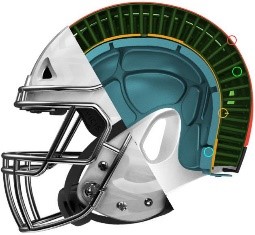
VICIS Zero1 Helmet
Viconic
The third innovation caters to bettering the traditional football pitch. Currently leading the automotive industry for head impact protection, Viconic’s propriety technology is in use by over 65% of the cars sold in North America. Having created a special synthetic surface that was used for blast-resistant mats later sold to the military, Viconic aims to place this patented technology under the football pitch. This will aid in the absorption of impact as the material is a highly recoverable thermoplastic which recovers fully to its original shape post impact. Engineered to selectively buckle, the turf remains intact for phase play but provide its shock absorbing qualities during the collision of players.
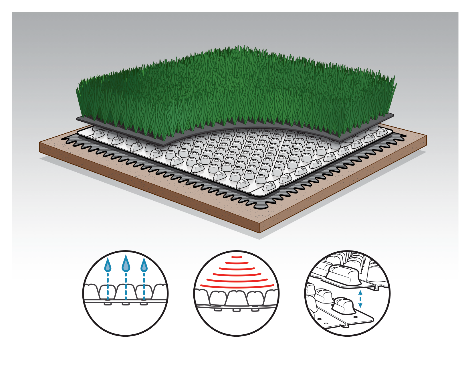
Viconic's Shock Absorbing Turf
While this turf technology is clearly the epitome of pitch innovation, it is highly unlikely that it will be implemented into youth and community stadiums and fields. Stated that it will be commercially available this past summer (2017), the company has yet to market its accessibility. Due to the average total costs of $570,000 to renovate a pitch without the additional cost of Viconic’s innovate system, communities will likely be subjected to continuing to play on traditional gravel and grass fields with no benefit from this remarkable technology.
The Vacuum Created by Present Solutions
While the NFL has helped put an emphasis on innovating safe solutions to equipment, the necessity of early concussion detection has not been fulfilled. Noting the vacuum created, multiple start-up ventures have attempted to create commercially available products to more accurately detect concussions.
BrainScope Company Inc.
Approved by the US Food and Drug Administration, BrainScope has created a patented hand-held device called “The Ahead 300”. The device can detect signs of a concussion by an analysis of the victim’s brain waves. This is done through quantitative electroencephalography (QEEG) and which uses algorithms to detect abnormalities in the victim’s EEG signal.
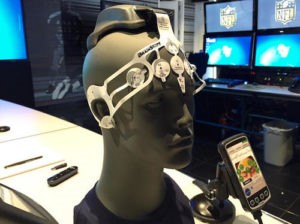
Brightlamp
A start-up venture of Purdue University, this computer vision and machine learning app uses a person’s iPhone flashlight to diagnose the severity of a concussion, Flashing the flashlight into the victim’s eye and measuring pupil dilation*, the app then uses a could-based neural network to evaluate if the person has the characteristics of a concussion. Reviewed as the fastest concussion diagnostic on the market due to its 5 second operation time, the device also boasts a near perfect accuracy of 98%. While reviews and statistics for the Brightlamp are impressive, the necessity to remove the player from game to appropriately gauge brain trauma is deemed a major weakness in usability. This in turn caters to innovation that allows live time feedback at an affordable price.
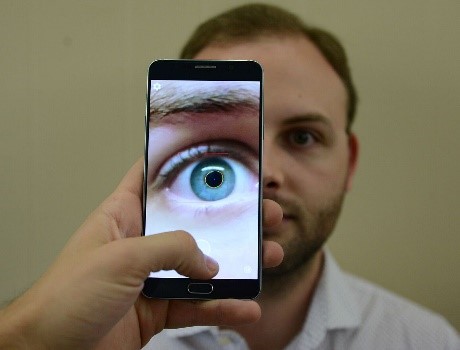
Force Impact Technologies (FIT) Guard-
Attempting to fill the necessity of live time concussion detection, the FITGuard seamlessly integrates accelerometers into a mouth guard to detect both linear and angular accelerations. This data is collected during play and is sent via Bluetooth to a trainer on the sidelines. Any collision or impact that is above the established safe threshold sends an alert to the sideline trainer that the user must be further examined. Although FITGuard has proven the concept, it has yet to release the product into the market and aims to do so later next year. However, because many sports do not require the use of a mouth guard and professional athletes are adverse to swapping their slim dentist prescribed mouth guard, the FITGuard solution is not an all-encompassing solution to the problem.
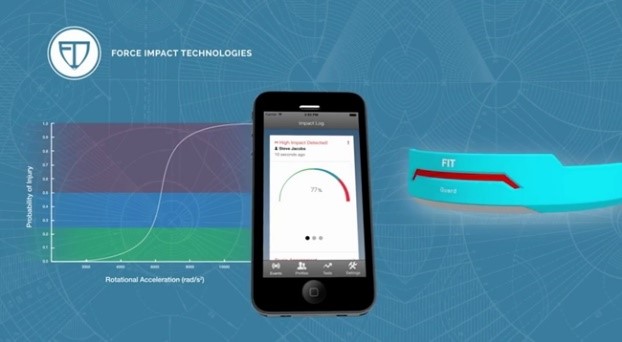
While the FITGaurd is a technological advancement in the field of mouth guards, it comes with concerns. Claiming no ability to prevent concussions FITGaurd’s only benefit is generated from its ability to accurately measure linear and angular accelerations of the head. While the same relative readings can be calculated by external sensors, the increased accuracy is not enough added value to warrant an athlete’s change in mouth guards.
Conclusion
While there are many ventures and programs created to better detect and examine concussions, society’s concern for safety will continue to drive innovation. As most sports require this additional safety measure, there is ample opportunity and necessity for a solution to be created for the common Joe. Progressing forward, it is recommended that the companies above are monitored as they are hypothesized to becomes leaders in this emerging industry and will undoubtedly capture large market share upon release. Furthermore, it should be noted that there is no technology currently available that will prevent concussions. The ventures presented in this report claim to aid in concussion detection and or minimize for impact from collisions.
Terms
Chronic Traumatic Encephalopath - A progressive degenerative disease of the brain found in people with a history of repetitive brain
trauma. This includes symptomatic concussions as well as sub concussive hits to the head that do not cause symptoms.
Tau Protein - Proteins that stabilize microtubules in the brain. The protein forms clumps and slowly spreads throughout the brain
killing cells that are essential for learning and memory. Common in Alzheimer’s.
Pupil Dilation - A pupillary response that varies the size of the pupil via the optic and oculomotor cranial nerve. In the case
of dilation, the pupil widens.
Extended Glasgow Outcome Scale - A scale created to categorize patients with brain injuries.
Science
Tau Proteins and Concussions - Using a simple metaphor comparing your neurological system to a railroad, tau proteins within your
head are likened to the ties that hold the tracks together. When healthy and functioning appropriately, the tau proteins aid in
communication between various areas of the brain by connecting nerve cells in your brain together. Head injuries caused by linear and
angular accelerations cause the tau proteins to be “knocked loose”. The magnitude of loose tau within the first 12 hours of head injury
move the Extended Glasgow Outcome Scale* from a score of 8 (good recovery) to a score of 2 (vegetative state) or 1 (death). After repetitive
blows, scientists claim that the tau proteins undergo chemical changes and are unable to complete their functionality of holding nerve cells
together. Consequently, they get damaged and become tangled where they create figurative road blocks in the brain communication system. The
symptomatic outcome of this is associated with Parkinsonism and Alzheimer’s disease.
Brightlamp - Shining a light in a patient’s eye is a common procedure carried out by doctors. The purpose of this is to test the
healthy function of two cranial nerves: the optic nerve and the oculomotor nerve. While the pupil in the illuminated eye should constrict due
to the pupillary light reflex (direct response), the pupil in the non-illuminated eye will also constrict (consensual response). The app
compares the patient’s cranial nerve’s ability to contract due to the shining light, checks for any additional abnormalities, compares the
data to a cloud of previously diagnosed and tested patients. After this process is completed it can present the patient with a result of their
physical condition.
